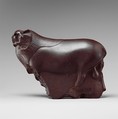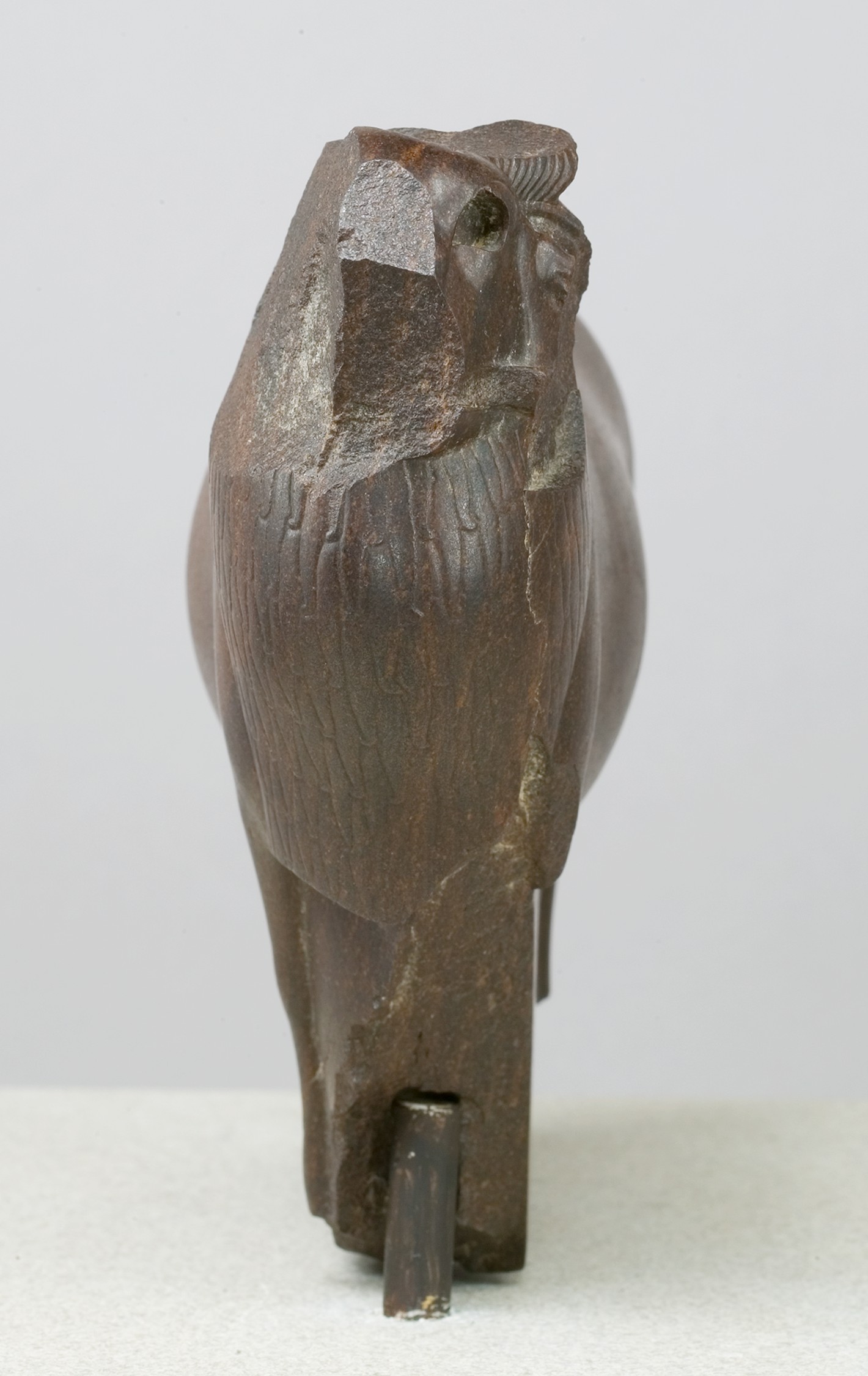Statuette of a ram
Late Period
This small sculpture probably represents the sacred ram of Amun. It would have been part of the cult equipment of a temple for display or use in ritual. Small ritual statuary was frequently made of precious metals or bronze. Absence of an integral base, traces of undercutting very rare in stone, and formerly inlaid eyes suggest that this statuette was intentionally modeled after a metal prototype. Stylistic details, most obviously the slight curl at the tip of the ram's shaggy locks, bear witness to the artistic influence of the Achaemenid Persians who ruled Egypt from 525–404 B.C.
Due to rights restrictions, this image cannot be enlarged, viewed at full screen, or downloaded.
This artwork is meant to be viewed from right to left. Scroll left to view more.






